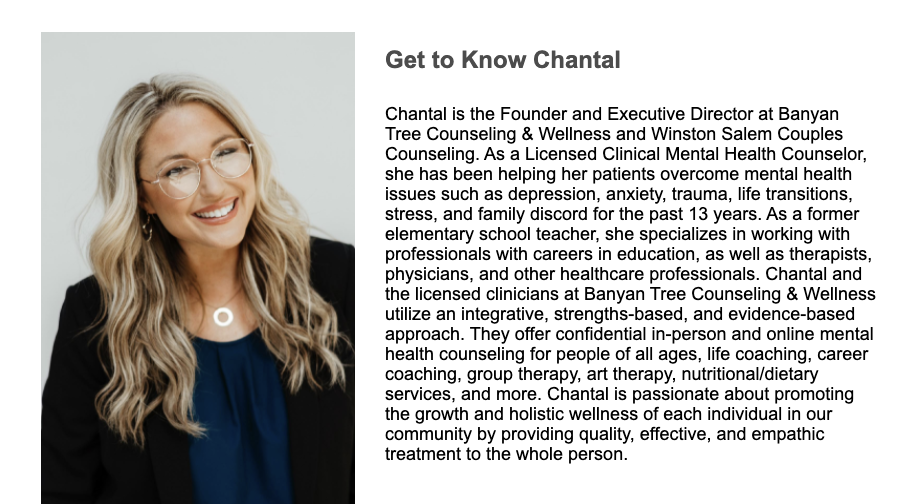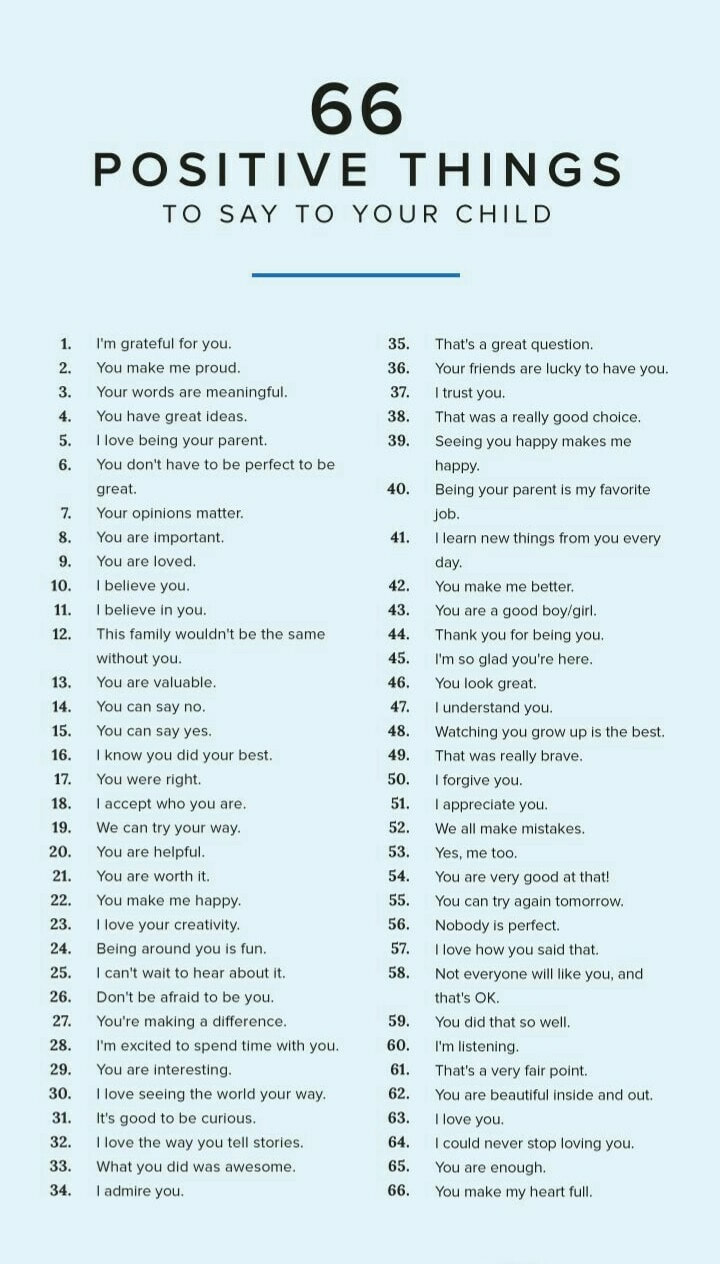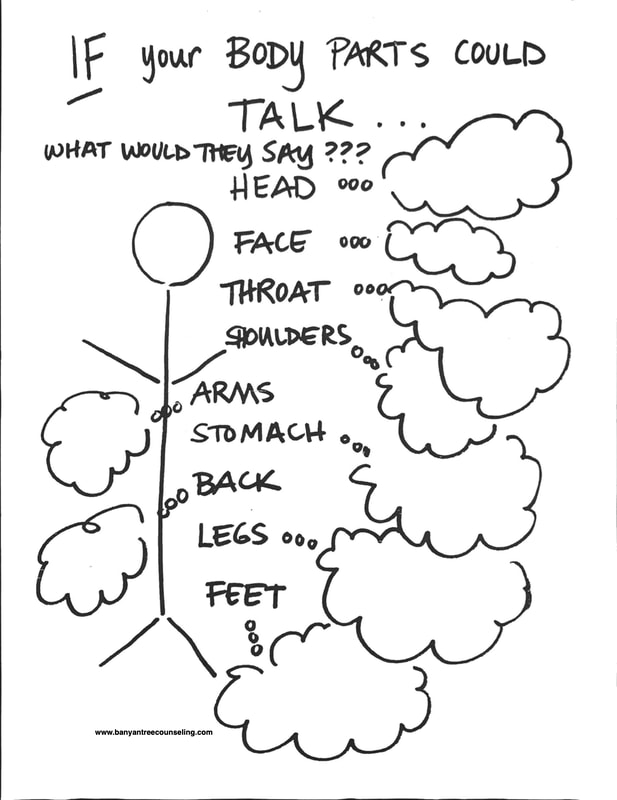- Home
-
Services
- Autism Assessments >
- Coaching
- Couples >
- Discernment Counseling
- Educational Consulting | Special Needs Advocacy >
- Psychiatric Services | Medication Management
- Nutrition
- Parenting + Family Therapy
- Play Therapy for Children
- Separation Counseling + Collaborative Parenting
- Telehealth
- Therapy for Teachers
- Trauma
- Schedule Appointment
-
Meet the Team
- Abby Olmstead
- Adrienne Fisher
- Amber Garcia >
- Amber Miner
- Andrea Miles
- Arionna Wilkerson
- Autumn Martin
- Amber Miner
- Brittany Kai
- Brittany Proxmire
- Brittany Stewart
- Bru Ramirez >
- Chantal D. Hayes
- Christine Ridley
- Emily Ortiz Badalamente
- Hayley McCraw
- Jamie Cullen
- Jared Brinkerhoff
- Jordan Peterson
- Josh Bolle
- Les Gura
- Lisa Carpenter
- Logan King
- Rashaad Nelson
- Sarah Vanderpool
- Savannah Ornt
- Simone Banks
- Tiffany Woods
- Administrative Staff >
- About Us
- Hiring
...it's time to celebrate!!Please join us on Tuesday, September 7th at 12:00pm for a ribbon cutting ceremony/open house to celebrate the (delayed due to COVID) grand opening of our new location! |
|||||||||||||||
| Jamie is a Licensed Clinical Mental Health Counselor specializing in adult and childhood trauma, addictions, disordered eating, grief and loss, and co-occurring disorders. She has experience working with both chemical and process addictions, specifically their root in trauma, and is passionate about helping individuals enter and maintain recovery, utilizing therapy, psychoeducation, and community supports. |
References:
SAMHSA’s Concept of Trauma and Guidance for a Trauma-Informed Approach. (2014). Substance Abuse and Mental Health Service’s Administration.
SAMHSA’s Concept of Trauma and Guidance for a Trauma-Informed Approach. (2014). Substance Abuse and Mental Health Service’s Administration.
Almost an entire year into a worldwide pandemic, you may be feeling more stressed than ever. COVID-19 has made life different for everyone. From social distancing to virtual learning, everything has changed. Our routine isn’t what we were used to, and that can come with challenges.
If you find yourself struggling, finding a mental health counselor who can help you through this tough time is essential, even through a screen.
You wouldn’t just brush off a broken arm, would you? So why would you ignore your mental health? Your brain is your most complex and important organ. You have to take care of it.
The Impact of COVID on Mental Health
The world has been turned upside-down in the last year, from social distancing to having to go through virtual learning. All these changes are making it rougher for mental health than normal everyday life.
It’s no secret that a pandemic is rough on mental health. It’s been documented before that a pandemic will see a rise in mental health issues like anxiety, depression, and even OCD. There has been a rise happening with mental health issues because of the isolation, social distancing, and virtual learning and work.
It’s no secret that a pandemic is rough on mental health. It’s been documented before that a pandemic will see a rise in mental health issues like anxiety, depression, and even OCD. There has been a rise happening with mental health issues because of the isolation, social distancing, and virtual learning and work.
Social Distancing & Isolation
One of the first things that happened in many places was the closure of non-essential businesses and schools all over the United States. People were told that staying home and only going out when needed was going to help prevent the spread of the virus. All restaurants were closed to dine-in, and other social gatherings were put on hold till further notices.
There are reported issues that come with social isolation, which is where we are now. People are feeling the adverse effects of what is our new normal. There has been a rise of about 37% in mental health issues ranging from anxiety to depression during this quarantine.
The biggest worry is that of suicidal ideation during this time. Isolation is a risk factor for suicide, and being forced to be in isolation can increase the thoughts that lead to it. This is why talking to a mental health professional is vital.
If you are finding yourself in a dark place, find a counselor in your area. These times are hard, and having someone to talk to is going to be essential. If you aren’t able to contact a counselor, then reach out to your family and friends. You may not be able to see them in person but use FaceTime and Zoom to meet people. Your mental health is so important, and you have to take care of yourself, even in isolation.
There are reported issues that come with social isolation, which is where we are now. People are feeling the adverse effects of what is our new normal. There has been a rise of about 37% in mental health issues ranging from anxiety to depression during this quarantine.
The biggest worry is that of suicidal ideation during this time. Isolation is a risk factor for suicide, and being forced to be in isolation can increase the thoughts that lead to it. This is why talking to a mental health professional is vital.
If you are finding yourself in a dark place, find a counselor in your area. These times are hard, and having someone to talk to is going to be essential. If you aren’t able to contact a counselor, then reach out to your family and friends. You may not be able to see them in person but use FaceTime and Zoom to meet people. Your mental health is so important, and you have to take care of yourself, even in isolation.
Virtual Learning
There are many children out there that are still doing virtual learning. Your child may be one of them, and you can see them struggling. Many parents are worried about their child falling behind in social and emotional development during this time.
It's a valid worry. Children need to have one another to thrive and grow into adults later on. Zoom classroom isn’t the same as being in a school, but it is better than nothing. Make sure your child is logging into the meetings and participating. This is going to help them in the long run, and if they are struggling, talk to the teacher yourself. For special needs children, this virtual learning is more challenging. IEPs and other learning accommodations aren’t easy when it comes to a virtual classroom.
Now, as children start going back to the building, there are even more worries. For students with social anxiety, it may be heightened after being in isolation for so long. Take it easy on them and try and work with them to know it is okay. This virus is scary but wearing the mask, washing your hands, and staying six feet apart is helping.
Finding a mental health professional that can help with these worries will be vital in helping those who struggle. Being able to talk to someone who understands is going to be helpful in the long run.
It's a valid worry. Children need to have one another to thrive and grow into adults later on. Zoom classroom isn’t the same as being in a school, but it is better than nothing. Make sure your child is logging into the meetings and participating. This is going to help them in the long run, and if they are struggling, talk to the teacher yourself. For special needs children, this virtual learning is more challenging. IEPs and other learning accommodations aren’t easy when it comes to a virtual classroom.
Now, as children start going back to the building, there are even more worries. For students with social anxiety, it may be heightened after being in isolation for so long. Take it easy on them and try and work with them to know it is okay. This virus is scary but wearing the mask, washing your hands, and staying six feet apart is helping.
Finding a mental health professional that can help with these worries will be vital in helping those who struggle. Being able to talk to someone who understands is going to be helpful in the long run.
Job Insecurity
Losing a job during COVID-19 has been at an all-time high. This is a tough place to consider that have not only jobs been lost, but also insurance. This takes a toll on anyone’s mental health, not knowing how we can get the help we need.
The less money you make, the worse the impact is when it comes to losing a job. It is a scary place to be when you don’t know how you will afford to take care of your health.
Take the time to research what you can do if you lose your job and insurance. While it isn’t ideal, COBRA is an option if you can afford it. Your mental health should come first when dealing with something as stressful as a pandemic.
The less money you make, the worse the impact is when it comes to losing a job. It is a scary place to be when you don’t know how you will afford to take care of your health.
Take the time to research what you can do if you lose your job and insurance. While it isn’t ideal, COBRA is an option if you can afford it. Your mental health should come first when dealing with something as stressful as a pandemic.
Mental Health Check
It is essential to check in on your mental health and those around you. There are many signs to take in, and while some are subtle, others are loud and in your face. Here are some of the signs to look out for that may be signs you need to see a professional.
Those are just some of the signs that you may need to check in with a professional. Remember, your brain sometimes needs some extra help-- it can get "sick" just like any other part of your physical body. This pandemic is taking a toll on everyone, and you shouldn’t have to feel like you are going at it alone.
It isn’t easy right now in the world. That is clear as day. If you or someone you know is struggling, reach out. It doesn’t mean you are weak or broken-- it means you courageous and you care. We are here to help. Your mental health matters.
- Sleep or appetite changes: Are you sleeping more or less than usual? Are you eating normally, or do you find yourself eating more or less?
- Feeling disconnected: Are you finding yourself in the sense of unreality?
- Lacking motivation: Do you feel like you can’t do anything? Or can you not bring yourself to do everyday tasks?
- Mood changes: Is your mood fluctuating rapidly or drastically?
- Increased anxiety: Do you find yourself worrying more than not lately?
- Illogical thinking: Do you feel like the world is out to get you?
- Problems thinking: Are you struggling to find your thoughts? Is your memory getting worse? Can you not concentrate on anything?
Those are just some of the signs that you may need to check in with a professional. Remember, your brain sometimes needs some extra help-- it can get "sick" just like any other part of your physical body. This pandemic is taking a toll on everyone, and you shouldn’t have to feel like you are going at it alone.
It isn’t easy right now in the world. That is clear as day. If you or someone you know is struggling, reach out. It doesn’t mean you are weak or broken-- it means you courageous and you care. We are here to help. Your mental health matters.
Contact us to schedule an appointment with one of our licensed counselors today.
Written by Tia Kitchens for Banyan Tree Counseling & Wellness. Holding a degree in Psychology from Capella University, Tia is a writer with a passion for psychology and learning. In her free time she enjoys being with animals and hopes to work with therapy animals in the future. Ultimately, she aspires to spread awareness about the importance of mental health.
Our awesome therapist Amber Garcia shares some easy techniques to help you manage anxiety. These tips are great for all ages. Hope you find it helpful!
I recently came across this article about motivating children who lack motivation. One of the points the author describes made me pause. She asks the parent what motivates their child? What does he really want? What questions can I ask that will help him discover and explore his interests? What are his goals and ambitions?
Encouraging children requires you as a parent to step far enough away to see your child as a separate person. With all our good intentions, it is easy to become wrapped up in the stress of every day life and forget our children are not mini-me's, but are separate people with different preferences, different ways of thinking, feeling, and doing things.
For a child to feel motivated they must first feel seen. They must feel that their voice matters. That their parent takes the time to really listen-- not to what you want the answers to be, but to what your child is really saying. And if the answers happen to not line up with who you are, respect them, even if you disagree.
I read this "66 Positive Things To Say To Your Child" post today, and wrote down the ones I regularly say to my children, and the things I'm going to try. to say more often. It was a good reminder to see my children as their own separate selves that I must continue to learn and understand as they grow.
Encouraging things I say often:
#2: You make me proud.
#6: You don't have to be perfect to be great.
#17: You were right. (Especially if I had previously told them they were not!)
#37: I trust you.
#38: That was a really good choice.
#63: I love you.
Here's what I'm going to try to say more of:
#19: We can try it your way.
#34: I admire you.
#44: Thank you for being you.
#60: I'm listening.
#65: You are enough.
What are some things you say now vs. what you'd like to say more of to encourage your child and help them be the beautiful little people that they are?
Warmly,
Encouraging children requires you as a parent to step far enough away to see your child as a separate person. With all our good intentions, it is easy to become wrapped up in the stress of every day life and forget our children are not mini-me's, but are separate people with different preferences, different ways of thinking, feeling, and doing things.
For a child to feel motivated they must first feel seen. They must feel that their voice matters. That their parent takes the time to really listen-- not to what you want the answers to be, but to what your child is really saying. And if the answers happen to not line up with who you are, respect them, even if you disagree.
I read this "66 Positive Things To Say To Your Child" post today, and wrote down the ones I regularly say to my children, and the things I'm going to try. to say more often. It was a good reminder to see my children as their own separate selves that I must continue to learn and understand as they grow.
Encouraging things I say often:
#2: You make me proud.
#6: You don't have to be perfect to be great.
#17: You were right. (Especially if I had previously told them they were not!)
#37: I trust you.
#38: That was a really good choice.
#63: I love you.
Here's what I'm going to try to say more of:
#19: We can try it your way.
#34: I admire you.
#44: Thank you for being you.
#60: I'm listening.
#65: You are enough.
What are some things you say now vs. what you'd like to say more of to encourage your child and help them be the beautiful little people that they are?
Warmly,
If your body parts could talk, what would they say?
I've used this worksheet with my own children, with students I've taught, and with clients, both children and adults. Teaching kids to "tune in" to their bodies is an essential skill and doesn't always come naturally.
There are so many benefits to learning this skill! One is emotional regulation-- kids who can listen to their body have an easier time managing and coping with their feelings, especially the really big ones, like anger, disappointment, fear, frustration, guilt, sadness.. .
They feel more capable, confident, have a more secure sense of self.
They have less behavioral problems, better social skills with peers, more empathy and supportive relationships...
It's not just a skill for kids., Adults benefit in similar ways, too, with overall mental stability, positive sense of self, solid relationships, increased career satisfaction.
Take a moment today to tune inward,. Breathe in for 4 seconds, hold for 7, and slowly release for 8. Then scan your body and really listen to what each body part is telling you. Maybe some are silent, while others are screaming!
That's ok, no judgement.
All you have to do is listen.
Click to download the PDF to use at home.
There are so many benefits to learning this skill! One is emotional regulation-- kids who can listen to their body have an easier time managing and coping with their feelings, especially the really big ones, like anger, disappointment, fear, frustration, guilt, sadness.. .
They feel more capable, confident, have a more secure sense of self.
They have less behavioral problems, better social skills with peers, more empathy and supportive relationships...
It's not just a skill for kids., Adults benefit in similar ways, too, with overall mental stability, positive sense of self, solid relationships, increased career satisfaction.
Take a moment today to tune inward,. Breathe in for 4 seconds, hold for 7, and slowly release for 8. Then scan your body and really listen to what each body part is telling you. Maybe some are silent, while others are screaming!
That's ok, no judgement.
All you have to do is listen.
Click to download the PDF to use at home.
| if_body_parts_could_talk.pdf | |
| File Size: | 452 kb |
| File Type: | |
We're living through a significant time in history. This interactive packet helps parents talk with with their kids about the impact coronavirus has on their lives, and create a "time capsule" to document this experience to look back on.
You can download the free printable below. It was originally created by Long Creations, who deserves many thanks for sharing!
You can download the free printable below. It was originally created by Long Creations, who deserves many thanks for sharing!
| covid_kid_packet.docx | |
| File Size: | 1523 kb |
| File Type: | docx |
you weep
as you watch the blazing fire
burn down everything
you've ever loved
in time
the ashes will nourish
the barren and
fertilize the soil
one day
you will realize this
as you stroll through
your garden of flowers.
-Chantal Hayes
as you watch the blazing fire
burn down everything
you've ever loved
in time
the ashes will nourish
the barren and
fertilize the soil
one day
you will realize this
as you stroll through
your garden of flowers.
-Chantal Hayes
Of course there is a time of afternoon, out there in the yard,
an hour that has never been described.
There is the way the warm air feels
among the flagstones and the tropical plants
with their dark, leathery green leaves.
There is a gap you never noticed,
dug out between the gravel and the rock, where something lives.
There is a bird that can only be heard by someone
who has come to be alone.
Now you are getting used to things that will not be happening again.
Never to be pushed down onto the bed again, laughing,
and have your clothes unbuttoned.
Never to stand up in the rear
of the pickup truck and scream, as you blast out of town.
This life that rushes over everything,
like water or like wind, and wears it down until it shines.
Now you sit on the brick wall in the cloudy afternoon and swing your legs,
happy because there never has been a word for this,
as you continue moving through these days and years
where more and more the message is
not to measure anything.
-Tony Hoagland
an hour that has never been described.
There is the way the warm air feels
among the flagstones and the tropical plants
with their dark, leathery green leaves.
There is a gap you never noticed,
dug out between the gravel and the rock, where something lives.
There is a bird that can only be heard by someone
who has come to be alone.
Now you are getting used to things that will not be happening again.
Never to be pushed down onto the bed again, laughing,
and have your clothes unbuttoned.
Never to stand up in the rear
of the pickup truck and scream, as you blast out of town.
This life that rushes over everything,
like water or like wind, and wears it down until it shines.
Now you sit on the brick wall in the cloudy afternoon and swing your legs,
happy because there never has been a word for this,
as you continue moving through these days and years
where more and more the message is
not to measure anything.
-Tony Hoagland
Banyan Tree Counseling & Wellness
We are a team of licensed clinicians with a holistic, strengths-based, and evidence-based approach. We offer counseling for people of all ages, life coaching, group therapy, educational consulting and advocacy, assessments, and dietary nutrition services.
Categories
All
Active Listening
Adolescents
Anxiety
Children
Conflict
COVID-19
Depression
Effective Communication
Emotional Regulation
Empathy
Family
For Clinicians
Holidays
Life Coaching
Medication
Mindfulness
Office Photos
Parenting
Play Therapy
Poetry
Psychoeducation
Sleep
Trauma
Individual Counseling • Psychiatric Services • Medication Management • Nutrition counseling
COUPLES & FAMILIES • CHILDREN & TEENS • EDUCATIONAL ADVOCACY
If you are in a life threatening situation call 1 (800) 273-8255 or use these resources to get immediate help.
HIPAA Notice of Privacy Practices
© 2015-2024 Banyan Tree Counseling PLLC | Banyan Integrated Health PLLC | Banyan Tree Wellness LLC | All Rights Reserved.
All content on this website, unless otherwise specified, is the sole property of Banyan Tree Counseling & Wellness and is protected by copyright laws.
Any unauthorized reproduction, distribution, or use of this content is strictly prohibited and may result in legal action.
HIPAA Notice of Privacy Practices
© 2015-2024 Banyan Tree Counseling PLLC | Banyan Integrated Health PLLC | Banyan Tree Wellness LLC | All Rights Reserved.
All content on this website, unless otherwise specified, is the sole property of Banyan Tree Counseling & Wellness and is protected by copyright laws.
Any unauthorized reproduction, distribution, or use of this content is strictly prohibited and may result in legal action.
- Home
-
Services
- Autism Assessments >
- Coaching
- Couples >
- Discernment Counseling
- Educational Consulting | Special Needs Advocacy >
- Psychiatric Services | Medication Management
- Nutrition
- Parenting + Family Therapy
- Play Therapy for Children
- Separation Counseling + Collaborative Parenting
- Telehealth
- Therapy for Teachers
- Trauma
- Schedule Appointment
-
Meet the Team
- Abby Olmstead
- Adrienne Fisher
- Amber Garcia >
- Amber Miner
- Andrea Miles
- Arionna Wilkerson
- Autumn Martin
- Amber Miner
- Brittany Kai
- Brittany Proxmire
- Brittany Stewart
- Bru Ramirez >
- Chantal D. Hayes
- Christine Ridley
- Emily Ortiz Badalamente
- Hayley McCraw
- Jamie Cullen
- Jared Brinkerhoff
- Jordan Peterson
- Josh Bolle
- Les Gura
- Lisa Carpenter
- Logan King
- Rashaad Nelson
- Sarah Vanderpool
- Savannah Ornt
- Simone Banks
- Tiffany Woods
- Administrative Staff >
- About Us
- Hiring










